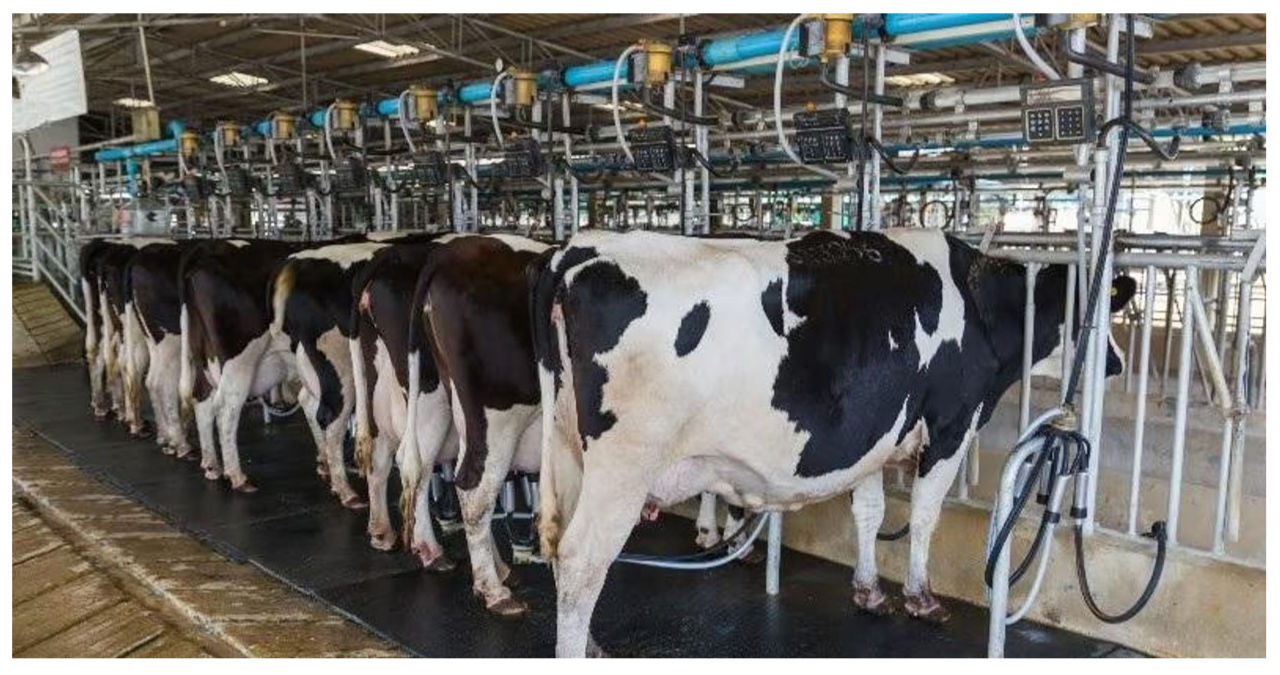H5N1 avian flu is currently infecting dairy cows in the United States, and the federal government has recently introduced multiple initiatives to prevent the mutation and transmission of the virus to humans.
The disease usually does not lead to death in cows, but it requires constant surveillance and preventive measures on farms across the country. To alleviate the financial burden, the U.S. Department of Agriculture announced assistance that will lower the costs and simplify the process for farmers in managing H5N1 outbreaks within their herds.
The Department of Health and Human Services has stated that the USDA is providing aid to producers whose premises have been impacted by H5N1. The assistance is aimed at enhancing on-site biosecurity measures to minimize the spread of the disease. Furthermore, the USDA is also implementing financial resources to compensate for the loss of milk production in herds affected by H5N1.
The USDA is also concerned about protecting the health of dairy workers, as they could potentially become carriers of the H5N1 virus.
Currently, transmitting bird flu from person to person is extremely difficult, and there has only been one recorded case of a human contracting a mild form of the disease during the recent outbreak.
The possibility of H5N1 mutating within humans, making it easily transmissible, is a major concern for infectious disease experts. This is due to the fact that, in the rare instances where it has happened globally, the disease has resulted in a 50% fatality rate among those affected.
The USDA has announced its intention to provide farm staff with $2,000 “per affected premises per month” to supply personal protective equipment. This initiative aims to prevent the spread of H5N1 infection among people working on farms.
Funds will also be allocated to provide training for farm workers in biosecurity measures. Additionally, the money will be used to support the expenses incurred in safeguarding individuals like milk haulers, veterinarians, feed truckers, and AI technicians who frequently travel between different farms.
The USDA has announced that an additional $2,000 will be allocated to assist farms in covering the cost of heat treatment to safely dispose of milk in a biosecure manner. According to the USDA, heat treatment carried out in compliance with FDA standards is currently the most effective method for deactivating the virus in milk.
Farmers will receive a budget of $10,000 per farm to cover veterinary expenses related to H5N1 monitoring and testing, as well as the care of infected cows.
According to a joint statement by USDA and HHS, these tools have a collective value of up to $28,000 per premises to facilitate and enhance biosecurity activities within the next 120 days.
Compensating Farmers
Farmers deserve fair compensation for their hard work and dedication to providing essential food and resources. It is crucial to recognize their contributions and support them in sustainable agricultural practices. By compensating farmers for their efforts, we can ensure their livelihoods and promote the growth of our agricultural industry.
One way to compensate farmers is through fair pricing for their products. This means offering them a price that reflects the true value of their labor and the costs associated with farming. By paying fair prices, we can help farmers cover their expenses and earn a decent income for their work.
Additionally, providing financial incentives for sustainable farming practices can be an effective way to compensate farmers. This could include subsidies or grants for implementing eco-friendly techniques, such as organic farming or water conservation methods. By supporting these practices, we not only reward farmers for their efforts but also contribute to the overall health of our environment.
Furthermore, offering insurance programs specifically tailored to the needs of farmers can be another form of compensation. Agriculture is a risky business, with factors like unpredictable weather and market fluctuations impacting farmers’ incomes. By providing insurance coverage for these risks, we can help alleviate some of the financial burdens farmers face and provide them with a safety net.
Lastly, investing in infrastructure and technology that improves efficiency and productivity on farms can also be a way to compensate farmers. By providing access to modern tools and equipment, as well as improving transportation and storage facilities, we can help farmers increase their yields and reduce post-harvest losses. This, in turn, can lead to higher profits and better compensation for their hard work.
In conclusion, compensating farmers for their contributions is essential to support their livelihoods and promote sustainable agriculture. Fair pricing, financial incentives for sustainable practices, insurance programs, and investments in infrastructure and technology are all valuable ways to ensure that farmers receive the compensation they deserve.



